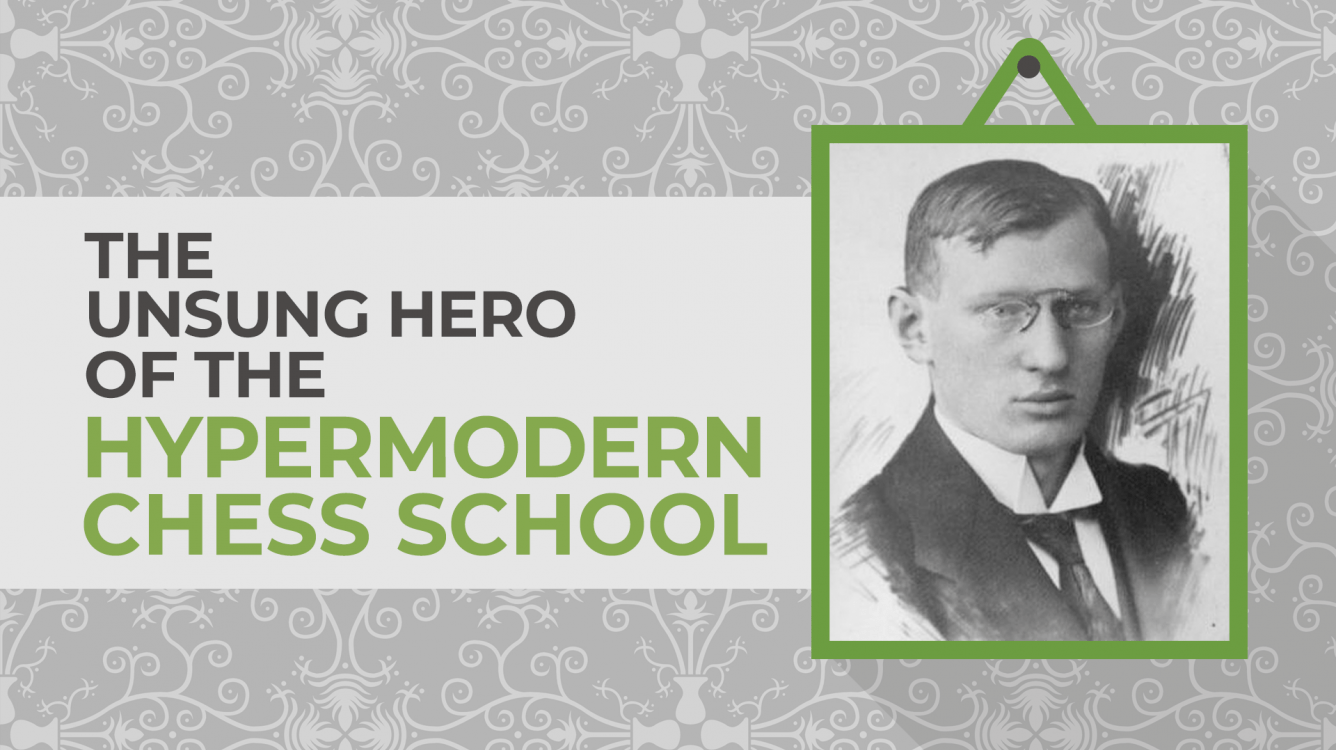
The Unsung Hero Of The Hypermodern Chess School
The phrase "unsung hero" may sound melodramatic to some, or even cliche, but I can't think of a better way to describe Gyula Breyer. His peers and colleagues, the hypermodern pioneers Aron Nimzowitsch and Richard Reti, both lived long enough to cement their reputation and fame. Breyer, who died at the almost poetic age of 28, unfortunately did not.
Today, Breyer is best-known for his variation of the Ruy Lopez opening (which is still popular today) and his role in the Hypermodern School of chess. Chess, as most of you know, has gone through many distinct phases in its rich development: Paul Morphy and the romantic wave of chess, Wilhelm Steinitz and his positional approach, and eventually the hypermodern movement which introduced and advocated the idea of fighting for the center without occupying it with pawns alone.

Breyer was born in Budapest in 1893 and joined his first chess club at the relatively advanced age of 16. He immediately made his presence felt by virtue of both his extraordinary play and outrageous statements. Breyer formally announced his arrival onto the chess scene by winning the Hungarian championship in 1912, ahead of his more famous contemporary, Reti, before his 20th birthday.
His timing, in regards to the international chess scene, couldn't have been better. For years, most serious players were playing with strict adherence to the principles laid down by Siegbert Tarrasch, accepted by most as chess "Gospel." They were, for the most part, excellent principles.

Tarrasch wanted to simplify chess by laying down fixed rules, while Breyer sought out exceptions to said rules and to complicate the game with unexpected twists and turns in order to reach positions which would confuse an unprepared opponent or one programmed for rigid chess.
During his brief life and chess career, Breyer backed it up over the board. He never strayed from his own principles of chess strategy and theoretical ideas. Fortunately for chess, one of the requirements at his local chess club was a daily quota of 50 blitz games, and these games were mostly against very strong players!
This constant, deep, and immediate immersion allowed Breyer to absorb much of the basic knowledge of fundamental opening theory and the laws that govern chess in general. Between this immersion, his burning passion, and his enormous talent Breyer was holding his own against the world top players within a couple of years.
This rigidity of chess thought at that time was beginning to lead to an unusual amount of boring and predictable games with an absurdly high amount of drawn games—enter the Hypermodern School: Aron Nimzowitsch, Richard Reti, Savielly Tartakower, and our man Breyer.

Nimzowitsch gets most of the press, but it was Breyer who in many ways led the charge up the hill against chess dogma. "We all learned from Breyer," said Reti, who was still playing in the old classical style during the years surrounding WW1 when he met Breyer. In fact, Reti's own idea of fianchettoing bishops doesn't come along until after meeting, playing, and getting to know Breyer.

Breyer's recommendation of fianchettoing the bishops in the first few moves was unheard of at that time and was a direct influence on the opening that bears Reti's name. However, controlling the center from the flanks was just part of Breyer's chess agenda. He strove for the initiative with White and with Black he always aimed for counterplay as opposed to equality.
Breyer lived by his own credo: "Beauty in chess is the unusual." He was the first to explain the mechanics of a minority pawn attack on the queenside and he was very fond of flank attacks, a calling card for the Hypermodern School.
Here is one of Breyer's most famous quotes: "We must condemn the deep recondite chess books to be burned at the stake. Let us at last learn how to play chess!" True, he made mistakes, came to erroneous conclusions, and sometimes made grandiose statements that were without substance—but he blazed new trails, revolutionized the game, and led it into exciting new directions. Breyer, more than either Nimzowitsch or Reti, had a knack for creating dynamic and exciting positions.
We must condemn the deep recondite chess books to be burned at the stake. Let us learn how to play chess!
— Gyula Breyer
I think it's interesting to note at this point that he really admired Alexander Alekhine. The Russian's ability to make unpredictable yet extremely sound and creative moves astonished Breyer, and made Breyer and immediate fan.
A year before his death, he won an extremely prestigious tournament packed with the leading players of the day—the 1920 Berlin tournament. Breyer finished ahead of GMs Reti, Geza Maroczy, and two world championship challengers, Efim Bogoljubov, and Tarrasch. Here is an example of Breyer's attacking prowess versus the powerful Maroczy:
From that moment on, he published over 50 articles in a Hungarian language newspaper published in Vienna. Much of what you will read was painstakingly gathered together for publication of the only book I've seen on this revolutionary and innovative spirit. Breyer also briefly held the record for simultaneous blindfold play when he played 25 boards at once in 1921.
In short, Breyer was a "man for all seasons." He suggested a worldwide rating system 50 years before ELO came into being, and also composed many chess puzzles, which he called "poems" - he truly was the unsung hero of the hypermodern school.






